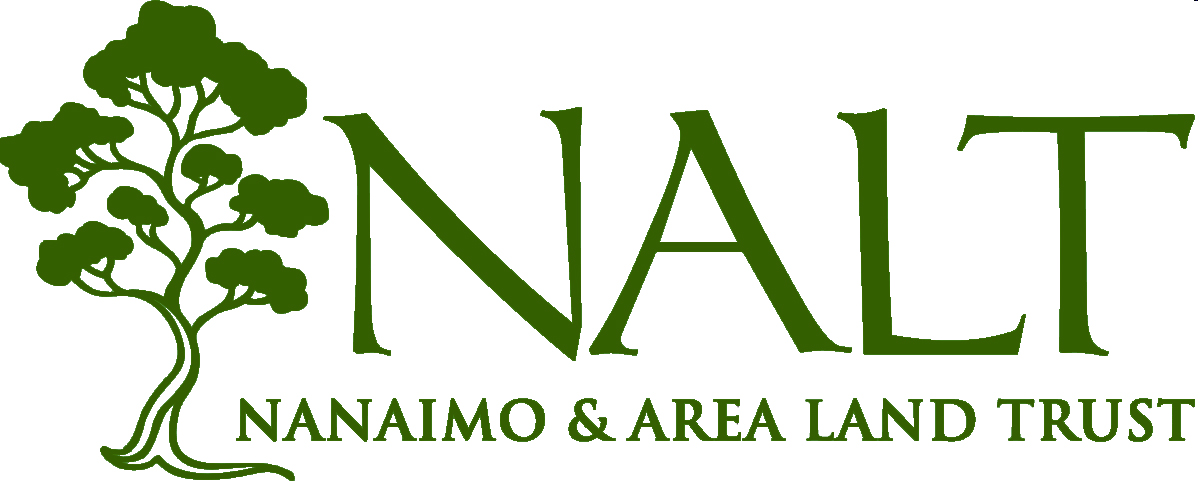The Basics for a Pollinator Paradise
Pollinator gardens can be as different as the people who tend them – there is no one way to create a pollinator garden. They can be totally wild and ‘messy’, or they can be formal and structured; it can be grown for food or for aesthetic enjoyment and restoration. It is up to you what you want your pollinator paradise to look like! The important thing is to consider what is needed to create good pollinator habitat.
Below are all the components needed for a Pollinator Paradise.
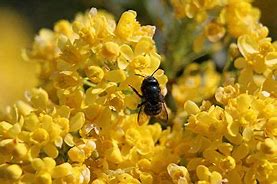
FORAGE
Native plants are shown to provide forage (or food) for the greatest diversity of pollinators, so be sure to include as many of those as you can! That said, non-native plants can also provide forage for native pollinators. Keep an eye on the non-native plants in your garden and let us know what pollinators you can ID visiting them.
Tips:
- Plant species in clumps or ‘drifts’ of at least 5 plants, this makes it easier for pollinators to find them and feed.
- Add species that bloom at different times and will ensure there is forage across the spring and summer.
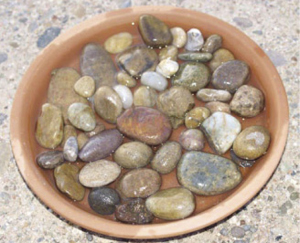
WATER
Pollinators get thirsty too! Providing a shallow water dish will keep your bees and other pollinators refreshed.
Tips:
- fill the water dish with pebbles or marbles and only add water to the mid point of the pebbles (you don’t want your bees to drown while trying to get their drink)
- Add some ground oyster or other sea shells, as many bee species seem to be attracted to water sources that have a particular smell
- Many bees will visit the same water source regularly once they have discovered it
- be sure to change the water 2 – 3 times a week during hot weather
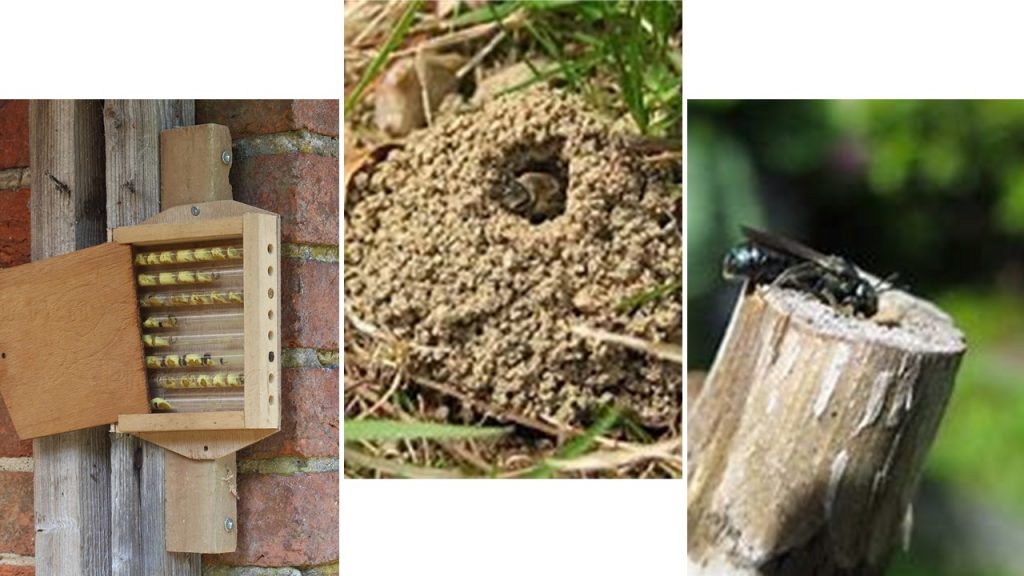
NESTING
While we tend to think of bees as living in a hive, most species of bee actually make much smaller ‘nests’ in specific locations, such as holes or tunnels in the ground, or in logs or hollow plant stems.
Tips:
- don’t cut back dead stems of plants until the following spring,
- leave dead wood, leaves or twig piles in an out-of-the-way place (and let them be),
- leave patches of bare earth for mining bees, 70% of native bees are ground nesters!
- create bee nest boxes with hollow tubes in sheltered locations.
- for tips on keeping your bee boxes/ homes free of parasites please visit this excellent resource.
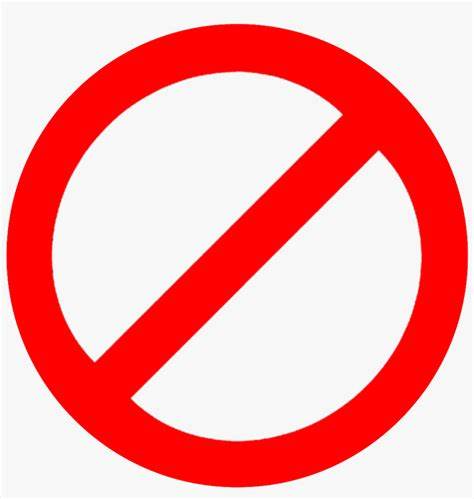
NO INVASIVE PLANTS OR PESTICIDES
Invasive plants can have devastating ecological consequences if they escape your garden (and the chances are very high that they will). Most pesticides are not only toxic to those visitors of your garden you don’t want, but also to those pollinators and other beneficial insects you do want.
Tips:
- For a good discussion on how to deal with garden pests, see here.
- ridding your garden of invasive plants can sometimes take a year of more of weeding or pulling out seedlings or regrown stems from root parts that you missed
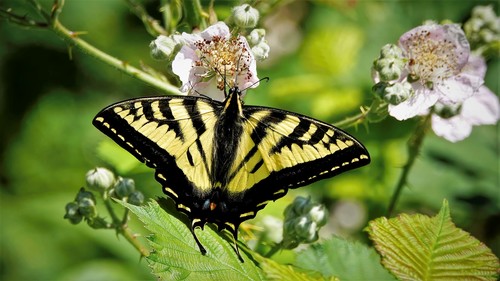
HOST PLANTS
Butterflies, moths, beetles and some bees use native trees, shrubs and forbs as host plants for their larvae. A host plant is a place for an egg to mature to the larval stage and for the larvae to feed off of. Native trees and shrubs are very important host plants for many pollinator species.
Host Plants – what to plant for who
Here are the host plants favoured by some native pollinator species
- Western Tiger Swallowtail Butterfly – Cottonwood, Alder and Willow
- Angel Wing butterfly – stinging nettle
- Lorquin’s admiral butterfly – Oceanspray, Willow, Rose
- Mourning Cloak butterfly – Willow, Cottonwood
- Pacific Fritillary butterfly – native Violets
- Painted lady butterfly – Garry Oak trees, thistle
- Silvery blue butterfly – Lupines
- Propertius Duskeywing butterfly – Garry Oak
- Eyed Hawk moth – Willow, Crab apple
- Eyed Owl moth – Oak, Maple, Pine, Hawthorne, Mountain ash, Bitter cherry, Elderberry, Blueberry, Willow.
Helping stem-nesting bees
If building (or buying, but we recommend building to ensure you have the appropriate materials) and maintaining your bee home is too much work, we recommend you take the easy way … and just leave your plant stems uncut over the winter! Biologists suspect that many gardeners unwittingly kill off numerous bees each year but cutting off stems that have growing bee larvae in them and throwing them away with their yard waste.
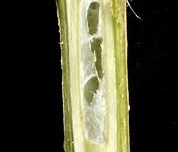
PITH: To help stem-nesting bees, you can include pithy flower stalks and soft, pithy wood in your garden as nesting locations. Pithy plants have spongy, soft tissue in the central stalk of the plant. Plants with hollow or spongy piths are ideal for nesting.
Some native plants with pithy stems : Douglas Aster, Salmonberry, Nootka Rose, Goldenrod
Some Exotic plants with pithy stems : Coneflower, Bergamot, Liatris, Sunflower & Raspberry canes
What to do
- Leave dead flower stems over winter. You can leave them as they are through the spring as well, this will not affect the plant’s growth.
- If you really feel the need to cut back your dead stems in the early spring cut them at different heights, from 8 to 24 inches (20 to 60 cm). This variation will allow different-sized bees an opportunity to nest.
- Leave the cut stems for a month or more to allow last year’s bees to emerge.
- In the spring and summer female bees will create a pollen ball, lay an egg, and then create a chamber in the stalk. She will repeat this process to the end of the stalk and will seal off the nest.
